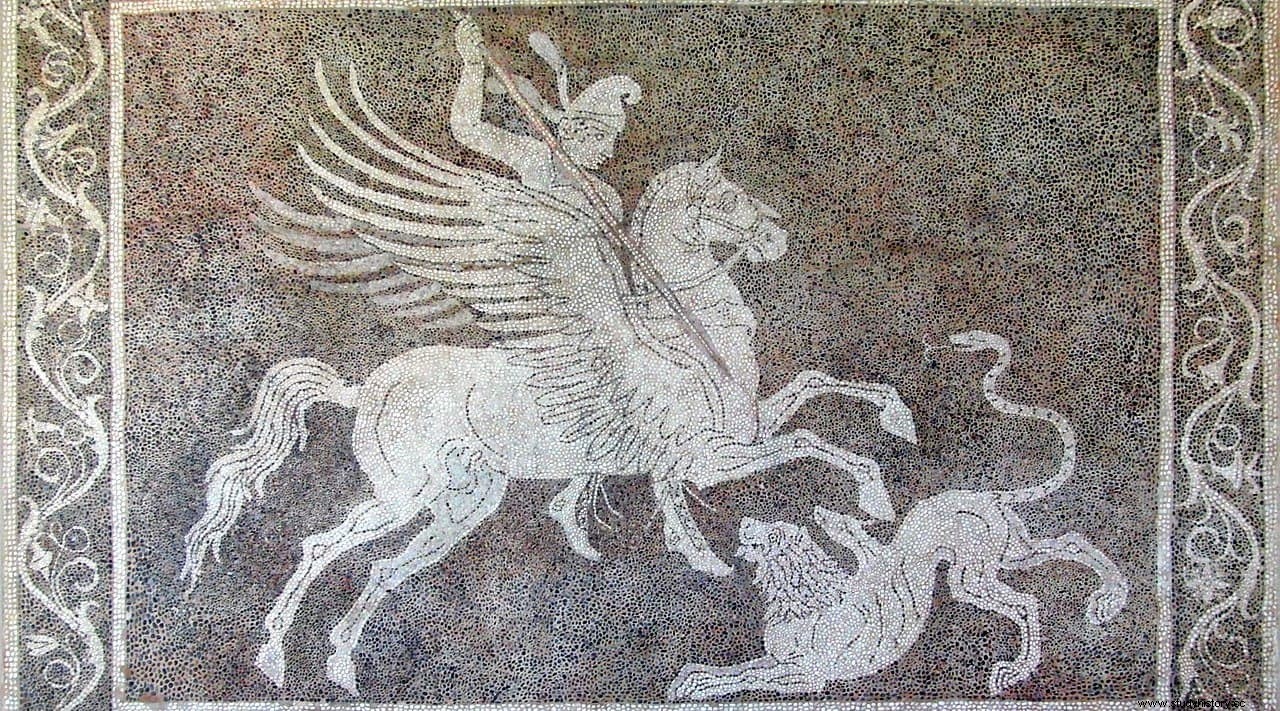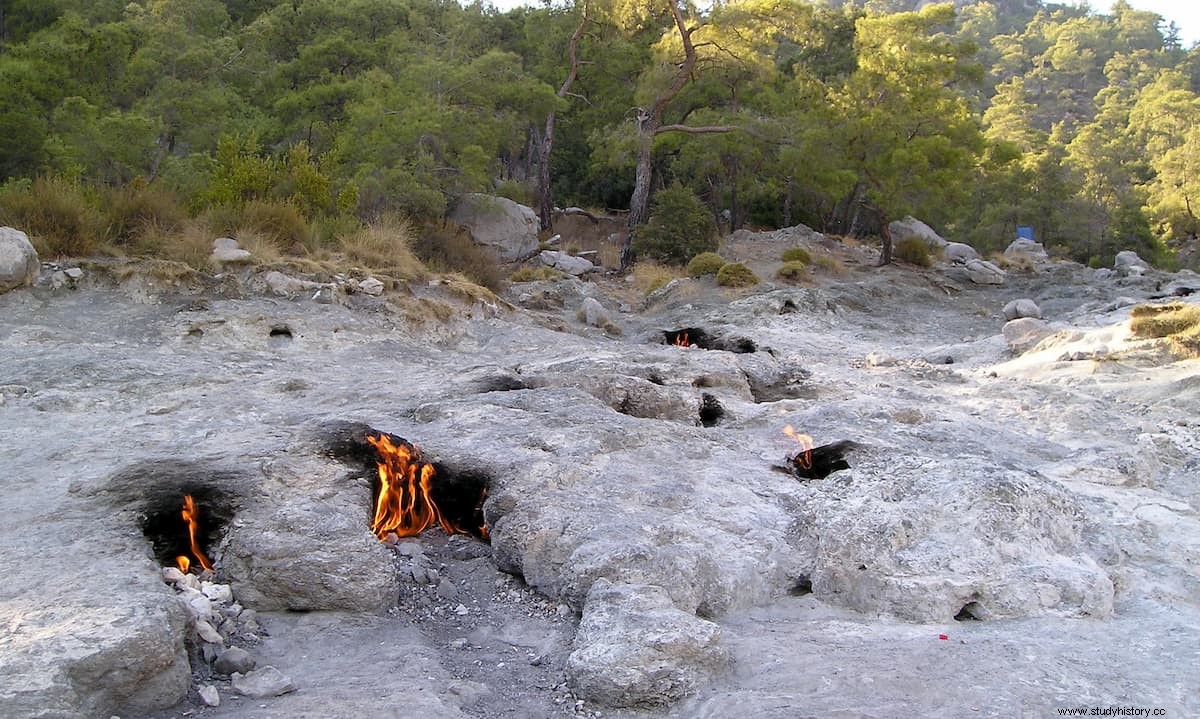About 80 kilometers southwest of the Turkish province of Antalya, near the town of Çıralı, is the mountain today called Yanartaş, whose main attraction is the numerous flames that constantly burn between its rocks, due to gas emissions. 
These fires, which have been burning for millennia (documented for more than 2,500 years) without interruption, are located in the ancient region of Lycia, whose inhabitants Herodotus said came from the island of Crete, and whom Homer cites among those who They came to the aid of the Trojans. But another passage from the Iliad About Licia it says the following:

That Homer placed the Chimera, the fire-breathing hybrid monster of Greek mythology, in the Lycian region, and that there was precisely a mountain there that also spit fire from the cracks in its rocks, seems a happy coincidence. The Turkish place name itself, Yanartaş, means burning rocks , and today consists of some two dozen cracks distributed in two sets at different heights, through which the methane that flows from the interior of the rocks burns.

However, until 1811 nobody noticed the possible relationship between the Chimera, the Iliad and the flames of Yanartaş. It would be Francis Beaufort, Irish hydrographer (creator of the Beaufort scale to measure the intensity of the wind) and rear admiral of the Royal Navy, who noticed the matter. In that year Beaufort was given command of HMS Frederickstein, spending the next two years exploring and mapping the entire southern coast of Anatolia, locating and locating for the first time many ruins from ancient Greco-Roman sites.
Upon his return to England, in 1817 he published a book entitled Karamania or a brief description of the South Coast of Asia Minor, and of the remains of Antiquity (Karamania or a brief description of the southern coast of Asia Minor, and of the ruins of Antiquity), in which he suggested that Yanartaş was none other than the ancient Mount Chimera mentioned by Pliny:
Curiously, at the foot of the mountain, the ruins of a temple of Hephaestus, the Greek god of fire associated with metallurgy and forging, are still visible.
However, other researchers based on Strabo believe that the ancient Mount Chimera was nothing more than a ravine that was further west, about 75 kilometers away, in another mountain where similar fires exist.

In any case, that several ancient writers affirmed that Chimera was a place rather than a monstrous beast, even Isidore of Seville attests in his Etymologies (confusing, yes, Licia with Cilicia):

The legends of the area say that in the past sailors could navigate thanks to the perennial llamas, using them as a lighthouse (it seems that until a few centuries ago they were up to 2 meters high). What is certain is that they were already burning at least 2,500 years ago, when the first written references appear.
The flames are distributed over an area of 5,000 square meters, and have a seasonal character since in the winter months they seem to burn with greater intensity, possibly due to the accumulation of pressure due to the increase in groundwater and changes in atmospheric pressure.
According to a study published in 2014 in the journal Applied Geochemistry , the methane that has fueled the flames of Mount Chimera for millennia does not come from the decomposition of organic elements, but from a chemical reaction within the rocks. This is what is known as abiotic methane , and this would be the largest emission yet discovered on Earth.
